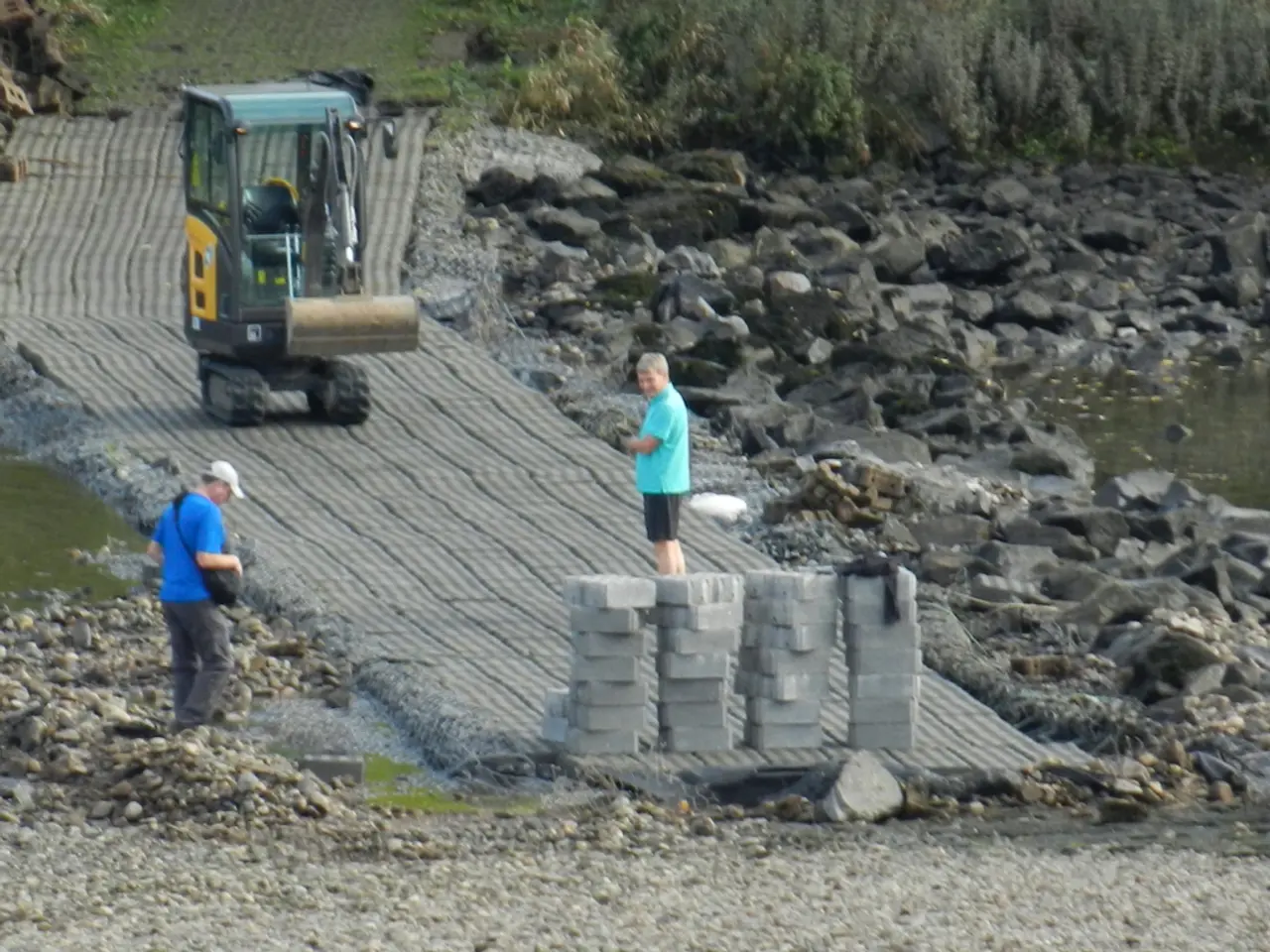"Insight: Solar power offers financial stability for agricultural communities"
In the UK, the government is pushing for an expansion of solar energy while maintaining a delicate balance with food security, biodiversity, and agricultural profitability. This approach is reflected in the upcoming publication of the new National Planning Policy Framework (NPPF) later this year.
The misconception that solar farms pose a threat to national food security has been addressed by Ed Miliband, the new Secretary of State, who recently spoke out about the issue. He stated that ground-mounted solar would occupy just 0.1% of UK land in 2022.
For landowners, particularly farmers, there are financial incentives to adopt solar energy. The Farming Investment Fund, administered by DEFRA, provides support to improve productivity, environmental sustainability, and animal welfare. The Countryside Stewardship schemes also offer payments for environmental management that could align with solar farm biodiversity goals and habitat improvements.
Solar farms, when properly managed, can offer environmental benefits. They can provide habitats that increase pollinator and bird populations and incorporate nature-based flood and water management features, benefiting neighboring land.
The government aims to triple solar capacity to 45-47 GW by 2030. To achieve this, the threshold for solar farms to be considered under the Town and Country Planning Act route is proposed to increase from under 50MW up to 150MW. This change would allow landowners to apply for planning consent directly to the local planning authority, streamlining the process and potentially reducing costs.
Most solar farms are financed by investment consortiums, and as solar gains more political support, community trusts and a range of other organizations are expected to take an interest. Solar farms can coexist with food production activities such as sheep grazing, cattle grazing, bee-keeping, row cropping, viniculture, or fruit production.
Lanpro, a company working on solar projects, has demonstrated this by incorporating biodiversity improvements into their projects, such as the creation of wildflower meadows, pasture, meadow grassland, hedgerows, and wetland habitats. The operator of the beekeeping business involved in these projects also provides training for people to develop beekeeping skills.
The new government seems to understand the complex relationship between energy production and food production, which could benefit both sectors. Profitability of solar farms is determined by factors like the scale of the development, proximity to a grid connection, and the suitability and orientation of the land. The average return on investment for a solar farm in the UK is believed to be between 10 to 20%.
In summary, UK government policy encourages solar energy expansion with environmental safeguards, offers financial incentives to farmers to adopt solar, and promotes solar development on less productive land or existing structures to protect food security and biodiversity. This provides a pathway for landowners to benefit economically while supporting national climate and ecological goals.
- The Secretary of State has addressed the misconception that solar farms pose a threat to national food security, stating that ground-mounted solar will occupy just 0.1% of UK land in 2022.
- To streamline the process of implementing solar farms, the government is proposing to increase the threshold for these projects to be considered under the Town and Country Planning Act route from under 50MW to 150MW.
- As solar gains more political support, community trusts and a range of other organizations are expected to take an interest, and solar farms can coexist with food production activities.





